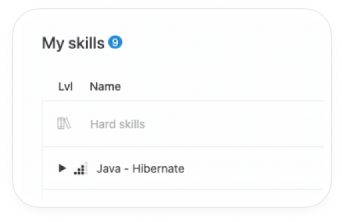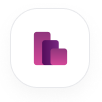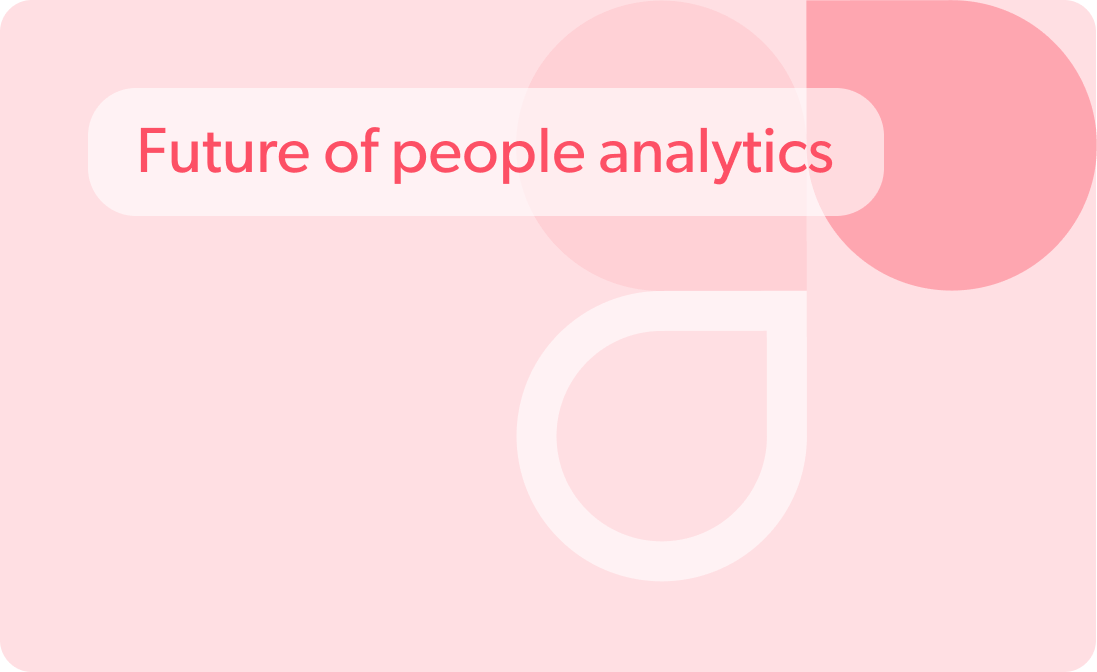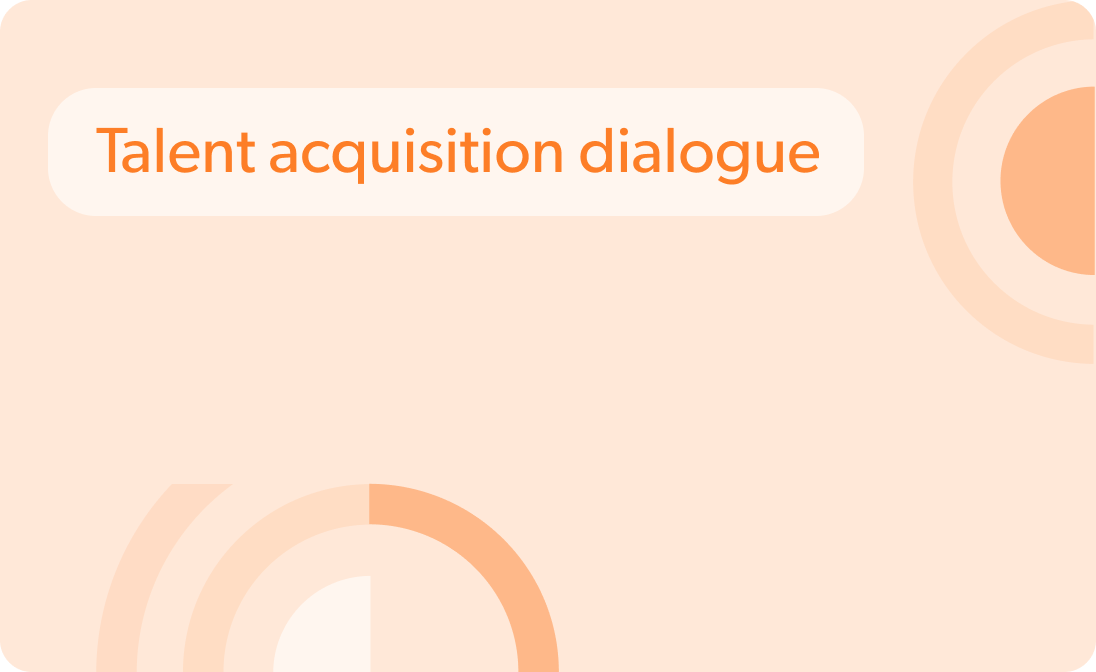How people analytics is shaping the workplace: Insights from Marc-André Lafrenière
Table of contents
- What is people analytics about? What does this sphere include?
- Where does people analytics belong in the organization? What’s the main role of people analytics in the organization?
- How can people analytics help with talent acquisition, retention, and employee engagement?
- What are the key metrics and KPIs in people analytics?
- What data sources are typically used in people analytics?
- Do you use any tools or technologies for your work?
- What are the challenges and potential ethical concerns related to people analytics?
- What skills and expertise are required to work in people analytics?
- What’s the role of people analytics in the future?
- Can people analytics accurately forecast our workforce needs in the future?
Meet Marc-André Lafrenière, senior director HR technology and people analytics at Desjardins. Marc-André is an analytic translator, behavior scientist, and user experience researcher with ten years of experience in applied research and analytics.
In this interview, we review the role and significance of people analytics in organizations. We covered various aspects, including the definition and scope of people analytics, its role within the organization, and how it contributes to talent acquisition, retention, and employee engagement.
Q: What is people analytics about? What does this sphere include?
People analytics is the application of data and statistical methods to gain insights and make informed decisions about various aspects of the workforce. It includes talent management, recruitment, employee engagement, performance management, compensation, and more.
By analyzing vast amounts of data, such as employee demographics, performance metrics, and feedback surveys, people analytics aims to identify patterns, trends, and correlations that can help HR professionals and managers optimize their strategies and improve overall organizational performance.
Additionally, people analytics can potentially automate or streamline manual HR processes, increasing efficiency and accuracy. For instance, it can be employed to automate compensation market analysis, detect pay anomalies, or identify data entry errors in HR systems. By leveraging the power of advanced analytics and AI-driven tools, HR teams can focus on more strategic initiatives and create a data-driven culture that further enhances decision-making across the organization.
Q: Where does people analytics belong in the organization? What’s the main role of people analytics in the organization?
People analytics typically resides within the HR function, supported by IT or a centralized data capacity. In our organization, our people analytics team operates under the leadership of a specific HR vice president. Still, we also have substantial exposure across various business sectors and direct connections to the HR senior vice president. Our primary responsibility is to democratize the usage of HR data throughout the organization.
As a people analytics team, we mainly provide data-driven insights that support tactical and strategic decision-making.
We aim to leverage data and statistical methods to offer valuable insights on various HR matters, such as talent acquisition, employee engagement, workforce planning, and performance management.
By employing sophisticated analytics tools, we help HR professionals and organizational leaders make informed decisions that foster a more engaged and high-performing workforce. Our goal is to drive data-driven decision-making across the organization and contribute to the overall success of the organisation’s initiatives.
Q: How can people analytics help with talent acquisition, retention, and employee engagement?
People analytics plays a vital role in enhancing talent acquisition, retention, and employee engagement through various avenues:
- We support talent acquisition efficacy by monitoring and analyzing key operational metrics related to the hiring process. It allows us to identify areas of improvement, optimize recruitment strategies, and reduce time-to-fill positions.
- We provide multiple ad hoc reports to guide strategic decisions, such as understanding the impact of candidate recommendations on retention and performance.
- Our team leverages predictive analytics to forecast the workforce, enabling proactive planning for future talent needs and trends.
By anticipating talent gaps and skill requirements, we assist in building a more robust and future-ready workforce. We deliver comprehensive reports on key metrics in the domain of retention and employee engagement, but our efforts go beyond that. We strive to uncover the drivers of retention and engagement to develop actionable improvement plans.
Understanding what motivates and engages employees enables HR and organizational leaders to implement targeted initiatives that boost retention rates and foster a positive work environment.
As a central player in extracting insights on these subjects, we collaborate with key stakeholders in making crucial business decisions and shaping the vision for the overall employee experience. By integrating data-driven insights with innovative HR technologies, we aim to create a seamless and engaging employee journey, enhancing the organization’s retention, satisfaction, and productivity.
Q: What are the key metrics and KPIs in people analytics?
People analytics encompasses many metrics and key performance indicators (KPIs) that provide valuable insights into various aspects of the workforce. Some of the key metrics and KPIs include:
- Headcount. Tracking the number of employees in the organization, including data on team spans and hierarchical structures.
- Turnover. Assessing the rate employees leave the organization, distinguishing between voluntary and involuntary turnover.
- Absenteeism. Measuring employee absenteeism rates.
- Employee Engagement. Evaluating employee engagement, job satisfaction, and organizational commitment.
- Diversity and inclusion. Monitoring metrics related to representing and including diverse groups within the workforce.
- Talent acquisition. Key indicators, such as the average time to fill a role, provide insights into the effectiveness of the recruitment process.
- HR service delivery. Tracking the efficiency and effectiveness of HR service delivery processes.
While this is not an exhaustive list, these key metrics and KPIs enable HR professionals to make data-driven decisions, optimize HR strategies, and foster a more engaged and high-performing workforce.
Q: What data sources are typically used in people analytics?
In people analytics, various data sources are typically utilized to gain comprehensive insights into the workforce. Our organization leverages Workday as our primary HR Information System (HRIS), which contains valuable employee data such as demographics, employment history, compensation details, and performance evaluations. In addition to Workday, we use a survey tool to collect and analyze employee feedback, sentiments, and opinions. These tools play a crucial role in understanding the overall employee experience and identifying areas of improvement to enhance employee engagement and satisfaction.
Another essential data source we track is our HR ticketing system. By analyzing employees’ and managers’ inquiries, concerns, and support needs, we can gain valuable insights into common pain points and address issues effectively.
Moreover, we occasionally use external websites to monitor our employee brand and reputation in the job market. This data helps us assess how potential candidates and the broader community perceive our organization.
Q: Do you use any tools or technologies for your work?
Some key tools we use include Business Intelligence (BI) tools such as Power BI. We also have BI capabilities that are natively integrated into our HR technologies. Overall, our tools enable us to access, analyze and share HR data efficiently.
- Data integration solutions. We recognize the importance of integration to derive insights from multiple data sources. Therefore, we have implemented an enterprise-wide data lake with BI and ML capabilities. This data lake allows us to consolidate and harmonize data from different systems, providing a comprehensive view of HR-related information.
- Power BI. Power BI is a valuable tool for creating interactive dashboards and conducting detailed analyses. It empowers us to present complex data in a visually appealing and easily digestible format.
- Python. For more complex analyses and ML models, we utilize Python, a powerful programming language that offers extensive libraries and tools for data manipulation and predictive modeling.
Q: What are the challenges and potential ethical concerns related to people analytics?
Building and maintaining trust with our employees is paramount. It requires obtaining consent and ensuring data security to protect individuals’ privacy and sensitive information.
Our focus in people analytics is to empower employees and support the organization equitably.
It is crucial to avoid targeting specific individuals for punitive actions. Instead, we use the insights to foster a positive work environment and improve organizational performance. Ensuring compliance with legal regulations is a top priority for us. We should align our practices with local and international data protection laws and adhere to our organization’s ethical standards.
One challenge we acknowledge is the potential slippery slope when dealing with individual predictions versus trends. While analyzing trends can provide valuable insights, individual predictions may negatively affect employees.
For example
Developing a machine learning model to infer an individual’s quitting likelihood might lead to unintended consequences. To mitigate such risks, we ensure that actions based on insights are guided by human expertise and careful consideration. Automating candidate selection is another area that demands ethical vigilance. Bias and discrimination should be avoided in the recruitment process. Our team identifies and mitigates biases to ensure fairness and equal opportunities for all candidates. Ultimately, ethical principles should underpin every aspect of our people analytics efforts. By upholding trust, consent, data security, compliance, and fairness, we can harness the power of people analytics to make positive and impactful decisions for our employees and the organization.
Q: What skills and expertise are required to work in people analytics?
Working in people analytics requires a multidisciplinary skill set that spans HR domain knowledge, business intelligence (BI), data analysis, and behavioral science.
- HR domain knowledge. A solid understanding of HR principles, practices, and processes is crucial for analyzing and interpreting HR-related data in a meaningful context.
- Business intelligence and data analytics. Proficiency in business intelligence and data analytics is essential to utilize data within the organization effectively. It includes gathering, cleansing, and transforming data to draw meaningful insights.
- Consulting skills. Strong consulting skills are valuable for engaging with stakeholders, gathering user requirements, and proposing data-driven solutions to address organizational challenges.
- Reporting and data visualization. Expertise in data visualization and reporting tools allows for creating interactive and visually appealing dashboards and reports that facilitate data-driven decision-making.
- Statistical analysis. Competence in statistical techniques enables HR analysts to uncover trends, correlations, and patterns in the data, supporting evidence-based decision-making.
- Behavioral science knowledge. Understanding behavioral science principles helps interpret human behavior patterns and guide the design of strategies aligned with employee motivations and needs.
- Data governance. Knowledge of principles ensures that data is managed and protected appropriately, adhering to data quality, privacy, and security standards.
- ML and advanced analytics. While Machine Learning (ML) is helpful, it is not required for all use cases or even within people analytics teams. In many instances, ML capabilities tend to be centralized in specialized teams, and HR analysts can focus on leveraging statistical and analytical techniques for insights.
Q: What’s the role of people analytics in the future?
As we progress, there will be a greater emphasis on helping HR departments automate and integrate new AI solutions into their processes. People analytics will facilitate this transition by leveraging advanced technologies to streamline HR operations, improve decision-making, and enhance employee experience.
Data literacy will become increasingly important in the future, and it will be a core responsibility of the people analytics team.
As data becomes more abundant and complex, HR professionals must be adept at interpreting and deriving actionable insights to drive strategic initiatives and optimize talent management. One area where people analytics will likely expand its impact is understanding employees as digital users.
With the rapid advancement of digital transformation, HR teams should collect and analyze employee behavior in digital environments to design effective solutions and processes that cater to their needs.
By delving into digital footprints, such as employee interactions with collaboration tools, communication platforms, and digital learning resources, people analytics can offer valuable insights to tailor HR practices for a more personalized and efficient digital workplace.
Overall, the future of people analytics is promising, with opportunities to revolutionize HR practices, improve organizational performance, and foster a more data-driven and employee-centric work culture.
By embracing the power of data and leveraging cutting-edge technologies, people analytics will continue to play a vital role in shaping the future of work and driving business success.
Q: Can people analytics accurately forecast our workforce needs in the future?
I think, yes, people analytics can play a valuable role in forecasting workforce needs in the future. Still, it is essential to acknowledge that its accuracy may vary based on the organizational context and the nature of roles.
People analytics can provide relatively accurate forecasts for certain positions, especially those with consistent and predictable demand patterns.
For example
Roles like call center agents, where demand fluctuates based on factors like customer volumes, can be forecasted accurately using historical data and trend analysis. However, forecasting becomes more challenging in fields where workforce needs are influenced by more complex and dynamic factors, such as corporate strategies, market shifts, or technological advancements. These roles may exhibit less predictable tendencies, making it harder to generate precise workforce forecasts solely based on historical data.
It’s essential to recognize that while people analytics can provide valuable insights and guide decision-making, it is not a crystal ball that guarantees perfect predictions.
It should be used to support strategic workforce planning, considering a combination of data-driven forecasts and expert judgment to create more robust plans.
Stay up to date with our newsletter
Every month, we’ll send you a curated newsletter with our updates and the latest industry news.


























 info@hrforecast.de
info@hrforecast.de
 +49 89 215384810
+49 89 215384810






